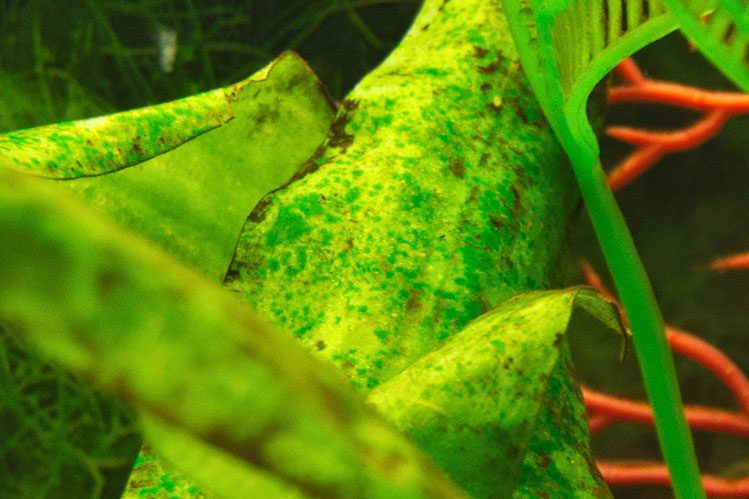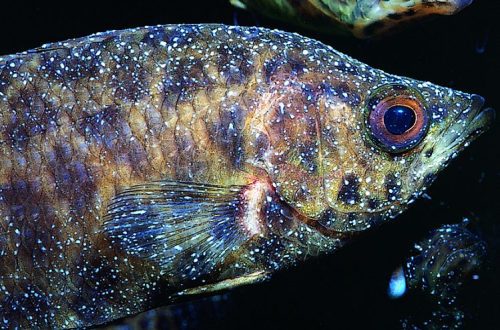
Algae in the aquarium: causes and how to get rid of it
A detailed guide from the candidate of veterinary sciences and aquarist Alexander Kuznetsov.
A beautiful and clean aquarium attracts attention. The fish look great in it. But some mistakes when setting up an aquarium or while maintaining it can lead to the growth of algae, which spoil the appearance of plants and interfere with fish.
Algae appear on plants, on aquarium glass, in water, on decorations. They can be filamentous, green, brown, in the form of black spots and more. If you have recently adopted fish and have not yet gained experience, it may be difficult for you to cope with them. And they grow very fast. But if you follow my recommendations, you can quickly get rid of algae in the aquarium.
Algae is a living indicator of biological balance:
If you don’t notice algae, you have a healthy tank with low levels of nitrates and phosphates, little organic matter, correct daylight hours, and live plants.
If algae appear, the biological balance in the aquarium is disturbed.
Groups of algae or their individual species may appear in the aquarium. By the type of algae, you can determine what exactly is wrong with the aquarium.
- Fast growing species: filamentous algae and unicellular algae that cause water blooms. These algae indicate excessive light and high nitrate/phosphate concentrations.
- Red Algae Group: Vietnamese, Blackbeard. Such algae grow in low light, high concentrations of organic matter or nitrate/phosphate.
- Xenoccocus – green spots and dots on the leaves of plants or aquarium glasses. These “green marks” indicate excessive lighting, an incorrect ratio of nitrates and phosphates (often a lack of phosphates against a background of an increase in nitrates), and a lack of carbon dioxide.
After identifying possible causes, it is important to eliminate them. And now the most interesting thing is that you need to eliminate not one (specifically yours), but all the reasons above. Beginning aquarists often stumble over this point, and the algae from the aquarium does not disappear. I’ll explain why next.

Partial elimination of the causes will only lead to the fact that some groups of algae will replace others. For example, with a reduction in daylight hours, but without correcting water parameters, shade-tolerant species – red algae – will gain an advantage. In such a situation, instead of water blooming, your aquarium will be captured by a “black beard”.
For the effective destruction of algae, it is important to eliminate all the causes that can lead to their growth. And it’s important to do it in a certain order.
I put together step-by-step instructions so that it would be convenient for you to save them on your phone and, if necessary, peep into the cheat sheet.
Remove as much algae as possible from the aquarium mechanically. This will speed up the cleaning process. In addition, if you leave them in the aquarium, then after death they will cause a decrease in oxygen concentration. After all, bacteria will use it to decompose dead algae.
Test for nitrates and phosphates (permissible concentrations of nitrates up to 10,00, and phosphates up to 0,5) and partially change the water. This is necessary to reduce the level of nitrates and phosphates – the main reason for the development of algae.
Clean the bottom of the aquarium and remove accumulated organic waste. This can be done in parallel with the previous paragraph.
Apply special means for the destruction of algae:
AlguMin Plus Tetra to kill algae in small aquariums
AlgoStop Depot Tetra for the toughest algae in large aquariums
Suppose you have already managed to remove algae from the aquarium. But if you do not adjust the lighting regimes and feeding the fish, in less than a week they will appear again. Therefore, catch two more recommendations.
First – choose the lighting depending on the presence of living plants in the aquarium, their number and types. Please note that excessive lighting may occur due to improper installation of the aquarium: in front of a window or on a windowsill. Or perhaps the lamp in the aquarium has been working too long.
Depending on the filling of the aquarium, I recommend the following length of daylight hours:
For aquariums without plants – up to 7 hours.
For aquariums with few plants or slow growing species up to 8 hours.
For aquariums with a large number of plants – up to 10 hours.
My second recommendation is to adjust the feeding. The quality and quantity of feed directly affect the amount of nitrates in the water. Therefore, it is important to adhere to the rules of feeding:
Give the fish as much food as they can eat within 2-3 minutes.
Feed your fish a small amount of food 2 times a day.
Remove uneaten food from the aquarium immediately.
Choose food that is easy for your fish to eat. Flakes or floating pellets are suitable for fish that feed on the surface of the water. Granules or chips – for fish that feed in the middle layers of water. Sinking granules, chips, tablets or wafers – for bottom fish.
If you follow my recommendations, you will quickly cope with algae, and the aquarium will delight you with bright colors of tropical fish and plants.





